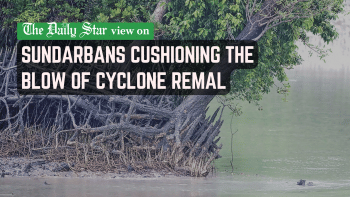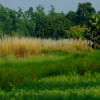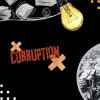Why should Bangladesh have Sundarbans biosphere reserve?

When we discuss biodiversity conservation in Bangladesh, the Sundarbans Reserved Forest always receives special attention. Although the Sundarbans Biodiversity Conservation Project, supported by the Asian Development Bank, failed by getting suspended abruptly in 2003, other funders, such as USAID, GIZ/Germany, European Commission, FCDO/UK, World Bank, and UNDP, have always prioritised this ecosystem, especially since 2011. This coincided with the tension between the Government of Bangladesh (GoB) and UNESCO's World Heritage Committee (WHC) over the Rampal Power Plant, starting in 2014. The regular recommendations from the WHC prompted the GoB to undertake several initiatives, captured in the country's State of Conservation Report of 2022 (whc.unesco.org). Two notable developments are the preparation of the Strategic Environmental Assessment (SEA) of Southwest Region of Bangladesh for Conserving the Outstanding Universal Value of the Sundarbans (2021) led by the CEGIS, and the Methodological Framework for Ecological Monitoring of the Sundarbans (2023) by Bangladesh Forest Department (BFD) and IUCN.
In November 2023, Bangladesh achieved a significant milestone in conservation diplomacy. In the General Conference of UNESCO, Bangladesh was elected a member of the International Coordinating Council of the Man and the Biosphere (MAB-ICC) for four years receiving the highest vote in Group 4. The MAB is an intergovernmental scientific programme of UNESCO. Operating since 1971, it brings together the natural and social sciences to protect ecosystems and promote sustainable development. The MAB-ICC is the main governing body of the MAB.
Biosphere reserve is a core concept promoted by the MAB, where a region is designated as a biosphere reserve to undertake a combination of environmental, social, economic and cultural actions, linking with scientific evidence. A biosphere reserve has three zones: core zone—for strict protection, buffer zone—for sound ecological practices, and transition zone—for sustainable human activities. Details on biosphere reserves can be found in UNESCO's Technical Guidelines for Biosphere Reserves (2022).
Interestingly, although Bangladesh is governing the MAB, it does not have any of the 748 biosphere reserves spread all over the world. The recent developments in this regard demand an answer to the question: Should Bangladesh explore the possibility to declare Sundarbans as its first biosphere reserve?
Before answering this question, we need to be clear: why we need so many designations for a single ecosystem—reserved forest, wildlife sanctuaries, world heritage site, Ramsar site, and now biosphere reserve. All such inscriptions have value. Nationally, the whole Sundarbans has been a reserved forest for the last 149 years, and due to its rich biodiversity, 53 percent of it is wildlife sanctuaries under the country's Wildlife Act 2012. But, given its global significance as a natural heritage, it became a UNESCO World Heritage Site in 1997, and for its global importance as a water-bird habitat, it was declared a Ramsar site in 1999 under the Ramsar Convention on Wetlands.
There are a few reasons why we should now explore the possibility of the Sundarbans to become a biosphere reserve: i) Bangladesh is now part of a strong global biodiversity network as a member of the MAB-ICC. This should allow Bangladesh to seek support and guidance from fellow members to prepare its proposal on the Sundarbans Biosphere Reserve; ii) through the SEA, Bangladesh now has good understanding of the whole south-west region. This will act as a basis for demarcating three biosphere reserve zones as noted above; ii) increasing donor interest in the Sundarbans could be capitalised by channelling further finance, which will be needed to declare and manage the Sundarbans biosphere reserve; iv) the Protected Area Management Rules 2017 has provisions to declare core and buffer zones, landscapes, and corridors (Clause 21) to allow different activities within and around a protected area, which could be aligned with biosphere reserves' guidelines to find and apply complementarity; v) an ecological monitoring framework for the Sundarbans is now available, which will create a strong basis to undertake scientific research in the envisaged Sundarbans Biosphere Reserve.
The environment ministry now needs to do three things. First, the ministry should establish a national committee on Man and the Biosphere. To do this, it needs to revisit the national committee established in 2004. The composition of this committee should reflect Bangladesh's changed aspirations as a member of the MAB-ICC and the recent developments in the conservation sector. Second, the ministry needs to work with the forest department to formulate a project to prepare an application for Bangladesh Sundarbans to be designated as a biosphere reserve. UNESCO's technical guidelines will be a great help in this. The target should be to submit the proposal to the MAB Secretariat over the next one year. In that way, the Sundarbans could be designated as a biosphere reserve in October 2025 in Hangzhou, China during the 5th World Congress on Biosphere Reserve. Third, the ministry should urgently map scientific institutions of Bangladesh and abroad to support the above proposal development. This mapping would also help to undertake research within the biosphere reserve once the declaration is made.
The interim government of Bangladesh is now actively reforming our institutional, legal and policy regimes. Along with reform, we need to rejuvenate the country's conservation actions and introduce new approaches in biodiversity space. Having the Sundarbans Biosphere Reserve could be a landmark of our ongoing journey to protect our nature while attaining sustainable development.
Dr Haseeb Md Irfanullah is independent consultant working on environment, climate change, and research system and visiting research fellow at the University of Liberal Arts Bangladesh (ULAB). Email: [email protected].
Views expressed in this article are the author's own.
Follow The Daily Star Opinion on Facebook for the latest opinions, commentaries and analyses by experts and professionals. To contribute your article or letter to The Daily Star Opinion, see our guidelines for submission.

 For all latest news, follow The Daily Star's Google News channel.
For all latest news, follow The Daily Star's Google News channel. 










Comments